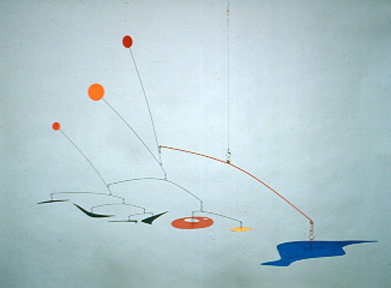Alexander Calder
dal 27/7/2007 al 17/2/2008
Segnalato da
27/7/2007
Alexander Calder
Museum of Contemporary Art MCA, Chicago
Focus. The exhibition displays works from 1927 to 1968, mostly from The Ruth and Leonard Horwich Family Loan, include examples of Calder's mobiles, stabiles, drawings, and paintings. Calder combined colorful shapes abstracted from nature - snowflakes, birds, and animals - with an interest in mechanics to create whimsical, hanging mobiles that move with air currents.

Focus
Alexander Calder is the subject of a small exhibition each year at the MCA to provide an opportunity to look at how the seminal artist's ideas developed throughout his fifty-year career. These works from 1927 to 1968, mostly from The Ruth and Leonard Horwich Family Loan, include examples of Calder's mobiles, stabiles, drawings, and paintings. Calder combined colorful shapes abstracted from nature -- snowflakes, birds, and animals -- with an interest in mechanics to create whimsical, hanging mobiles that move with air currents.
His explorations of both geometric and organic shapes have distinguished him as an innovator of art that responds to its physical environment. Calder changed his focus from drawing to painting to eventually creating stabiles, mobiles, and large-scale sculptures. In the late 1920s, he created a miniature circus, complete with figures of lions, sword-swallowers, and trapeze artists, with which he entertained his friends. Upon his return to the United States, Calder's work turned towards natural forms that he simplified into dynamic, often whimsical creatures. This exhibition is organized by Pamela Alper Associate Curator Julie Rodrigues Widholm.
Museum of Contemporary Art
220 East Chicago Avenue - Chicago
Hours: Monday Closed; Tuesday 10 am - 8 pm; Wednesday through Sunday 10 am - 5 pm



